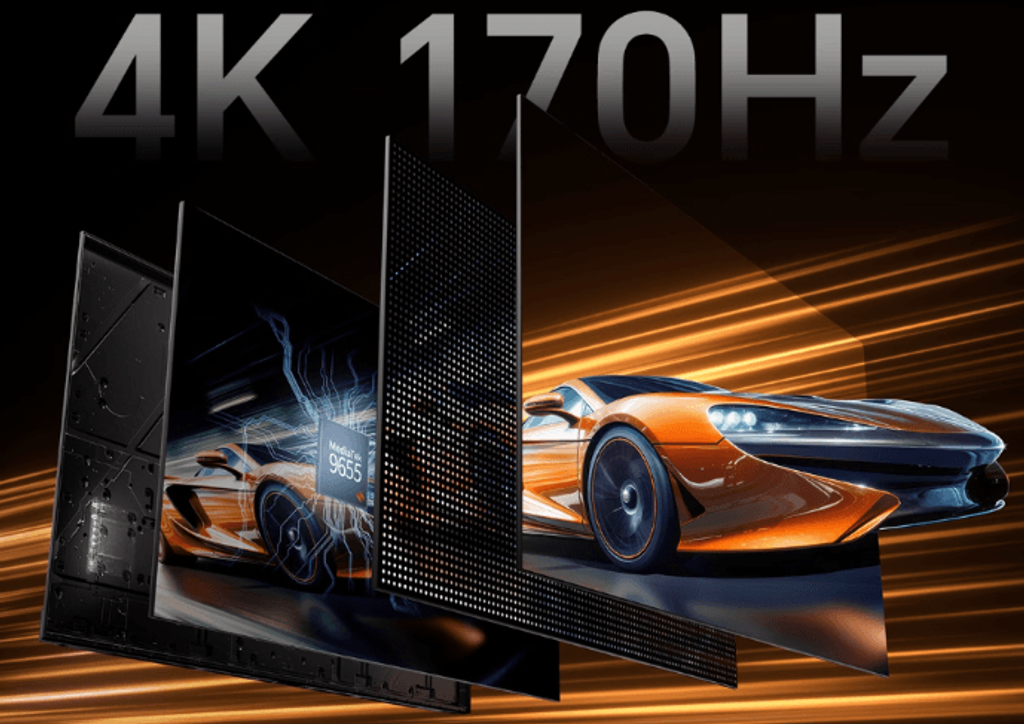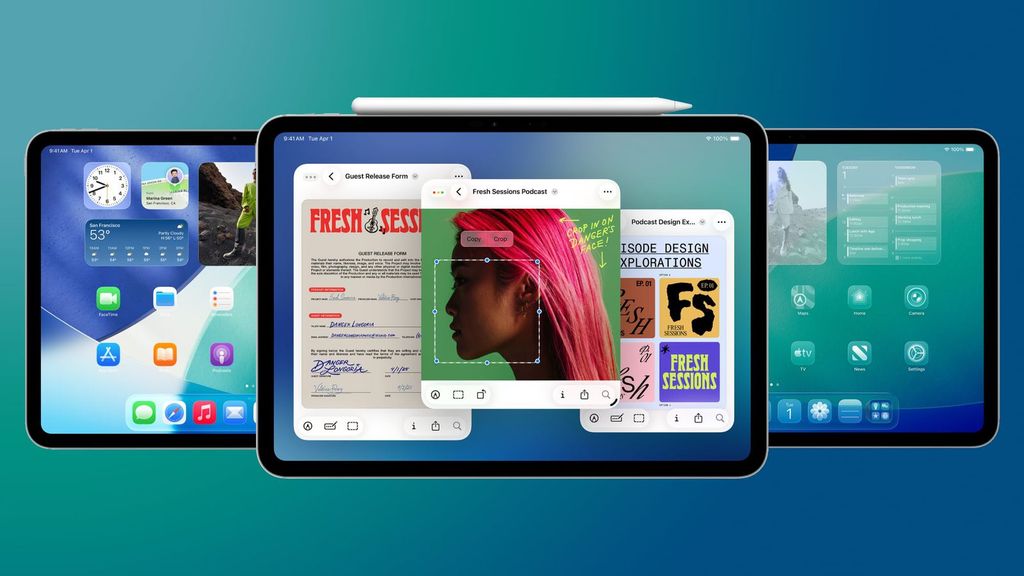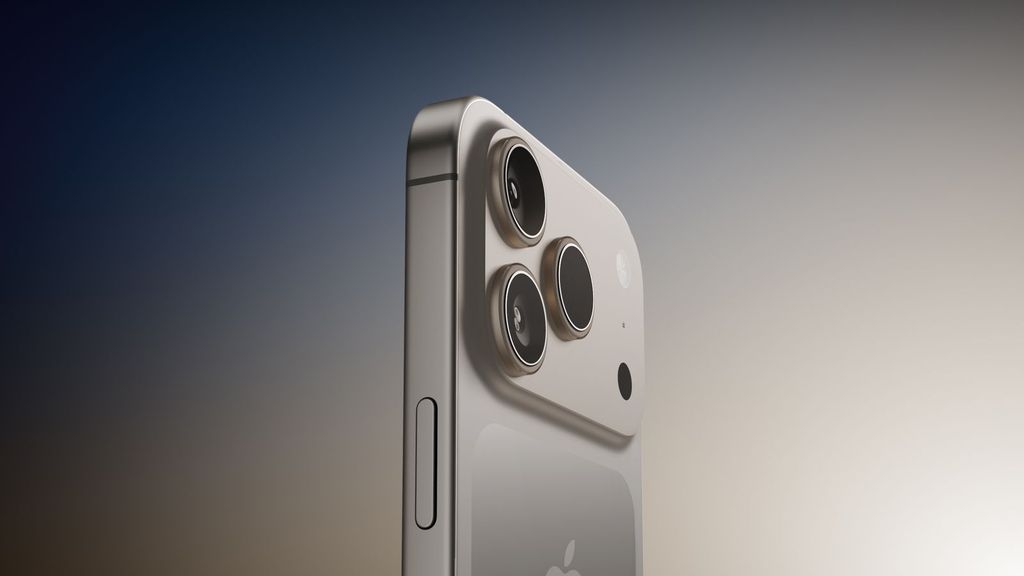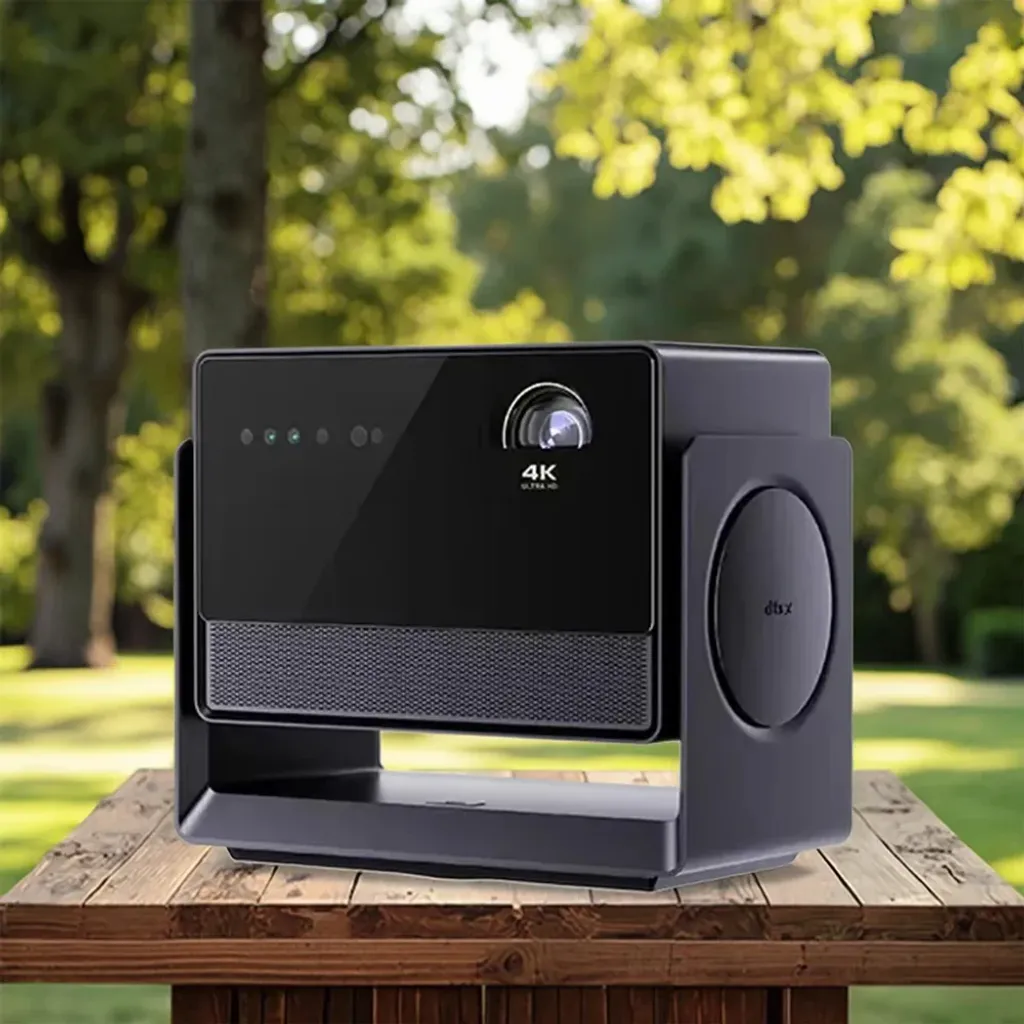- Matching (Score)
- Our verdict
- Competing TVs
- TV appearance
- Where to buy
- Contrast and black detail
- HDR effect quality
- Factory color reproduction
- Color reproduction after calibration
- Smoothness of tonal transitions
- Image scaling and smoothness of tonal transitions
- Blur and motion smoothness
- Console compatibility and gaming features
- Input lag
- Compatibility with PC
- Viewing angles
- Daytime performance
- TV features
- Apps
- Playing files from USB
- Sound
- Panel details
Hisense E7NQ PRO Review
Available screen sizes:

Complete the survey to find out the result
Panel type: LCD IPS Refresh rate: 144Hz Brand: HISENSE Resolution: 3840x2160 System: VIDAA Model year: 2024
HISENSE E7NQ PRO - Our verdict
7.0
Overall rating
When we look at the Hisense E7NQ PRO in everyday use, it is immediately clear that this television is designed for a wide audience. Although the image doesn't blow you away at first glance, it improves significantly after proper calibration. The colours appear more natural, and a brightness of around 500 cd/m² makes it comfortable to watch even in a sunny living room. The wide viewing angles offered by the IPS panel are an added bonus – we no longer have to fight for the best spot on the sofa. Dolby Vision can enhance the overall experience, and in SDR mode, the TV delivers a pleasant picture. Sports and gaming fans will find even more reasons to be satisfied. The high refresh rate (144 Hz) guarantees smooth ball movements on the field, and low latency, VRR, ALLM, and compatibility with G-Sync and Dolby Vision in games cater to those who value responsiveness and immersive gaming experiences. Because of all this, E7NQ PRO has become an interesting option for PC gamers. The VIDAA system works smoothly with plenty of apps, although it lacks typical music platforms like Spotify or Tidal. However, one can count on recording, AirPlay, mirroring, and decent compatibility with wireless devices. Admittedly, there are some shortcomings and flaws – especially concerning subtitle support from USB or perfect brightness and contrast management, and the absence of HGIG may disappoint the most demanding gamers. When we gather all the impressions and experiences, E7NQ PRO emerges as a device that works well in many situations. It has its advantages – including wide viewing angles, pleasant picture after calibration, plenty of additional features, and excellent motion fluidity in sports or games. At the same time, it should be remembered that this is not a television intended for those looking for perfect experiences during evening screenings in complete darkness. In low light, the shortcomings in contrast and black levels become more apparent, so we suggest that those planning mainly evening screenings look for alternatives among competitors. Nevertheless, as a universal solution for everyday use – from watching TV in a bright living room to playing console and computer games – E7NQ PRO performs really well.
Advantages
Wide viewing angles thanks to the IPS matrix
Good color potential after calibration
High refresh rate (144 Hz), VRR, ALLM, and G-Sync for gamers
Support for Dolby Vision
A considerable number of additional features (recording, AirPlay, mirroring)
Support for major audio formats (Dolby Atmos, DTS:X)
Relatively low input lag
Disadvantages
Average contrast and black
Problems with subtitle playback from USB
No support for HGIG
Brightness management issues in HDR in some scenes
Unavailability of some popular music apps (Spotify, Tidal)
Movies and series in UHD quality
6.4
Classic TV, YouTube
6.3
Sports broadcasts (TV and apps)
6.6
Gaming on console
8.0
TV as a computer monitor
7.6
Watching in bright light
6.2
Utility functions
8.9
Apps
7.7
Sound quality
7.0
Complete the survey to find out what fits your preferences
HISENSE E7NQ PRO - Competing TVs in this price range
HISENSE E7NQ PRO - TV appearance
HDMI inputs: 2 x HDMI 2.0, 2 x HDMI 2.1 (48Gbps) Other inputs: RCA (Chinch) Outputs: Toslink (Optical audio), eARC (HDMI), ARC (HDMI), Mini-Jack (Headphones) Network Interfaces: Wi-Fi 2.4GHz, Wi-Fi 5GHz, Ethernet (LAN) 100Mbps
Build quality: Good
Stand type: Legs
Bezel color: Graphite







Stand: Fixed
Flat design: No
Accessories: Stand
Buy at the best price
Select size:
HISENSE E7NQ PRO - Contrast and black detail
5/10
Local dimming function: Yes, number of zones: 32 (4 x 8)

Result
7,850:1

Result
4,150:1

Result
4,400:1

Result
2,500:1

Result
1,550:1
Visibility of details in the lights:

The tested Hisense E7NQ PRO in the 65-inch version uses an IPS panel, which unfortunately is not known for high contrast. As a result, blacks appear slightly "washed out" and occasionally take on a silvery hue, which is clearly visible in our photos. The manufacturer addressed this by equipping the TV with local dimming functionality. Unfortunately, in this 65-inch model, we only have 32 zones available, which, although it helps a little, is not enough to achieve truly impressive results, especially since the panel itself cannot provide a high-depth deep black. During testing, we observed highly varied results. In optimal conditions, we managed to reach around 7800:1, which can be considered decent, but in more challenging scenes, the contrast dropped to around 2000:1. Such values are at best average and do not befit a TV in this price range. Ultimately, although local dimming somewhat salvages the situation, there is a lack of truly deep, inky blacks and contrast that would leave a greater impression on us.
Halo effect and black detail visibility:
HISENSE E7NQ PRO - HDR effect quality
5.1/10
Supported formats: HDR10, HDR10+, Dolby Vision, Dolby Vision IQ, HLG Color gamut coverage: DCI P3: 97.0%, Bt.2020: 74.0%
Luminance measurements in HDR:

Result
408 nit

Result
299 nit

Result
446 nit

Result
215 nit

Result
527 nit
Based on the luminance chart, which indicates around 550 nits, it can be considered that Hisense E7NQ PRO theoretically has the potential to somewhat "enchant" us with its HDR image. While testing various scenes, we noticed that the TV continually tries to balance maintaining adequate brightness and preserving the deepest blacks. In favourable conditions – for instance, during a scene from "The Meg," where the screen is flooded with bright light – this brightness impresses. At such moments, we feel that HDR actually adds that "something" to the image. Unfortunately, when more challenging shots appear on the screen with small, bright elements against a dark background, the situation looks much worse. The brightness then drops to 200-300 nits, too little to distinguish HDR from regular SDR.
It's clear that the TV is trying, but hardware limitations – primarily the small number of local dimming zones – prevent it from fully spreading its wings. The result can therefore be quite uneven and just as average as in the contrast tests. However, it deserves credit for the impressive coverage of the DCI-P3 colour gamut at 97%. This allows the TV to showcase a wide range of colours, which, in the right scenes, can give us at least a taste of the true HDR effect. It’s a pity that the overall experience isn’t complemented by better brightness and contrast.
Scene from the movie “Pan” (about 2800 nits)

Scene from the movie “Billy Lynn” (about 1100 nits)

We tried even more demanding scenes, reaching for excerpts from the movies "Pan" and "Billy Lynn." Unfortunately, we encountered some problems here as well. In the most challenging sequence from "Pan," the TV clearly "blows out" the image – it lacks saturation, and the tonal range seems to escape, leaving us with a somewhat washed-out, depthless vision. Fortunately, it is not always that bad. The scene from "Billy Lynn," where we have both the protagonist in the foreground and fireworks in the background, performed much better. The actor's face was rendered correctly, and the colourful explosions did not merge into a shapeless blob of light. This shows that the TV can, at least sometimes, handle difficult shots.
Hisense equipped this model with a dynamic tone mapping feature, which theoretically should help in even more demanding moments. In practice, however, when we activated it, the image became overly brightened, which only exacerbated the problem. Therefore, although this option exists, we recommend caution – turning it on often does more harm than good. As a result, we are left again with mixed impressions. The TV can sometimes show its "claws" and remind us that HDR is not just a marketing slogan, but on the other hand, it still lacks stability and coherence in challenging scenes.
HDR luminance chart:
HDR luminance
E7NQ PRO offers several HDR options: static HDR10 and more advanced formats Dolby Vision and HDR10+. During our tests, we noticed that switching between these modes can result in some loss or gain in image quality. With standard HDR10, the screen doesn’t look bad, but when we switch to Dolby Vision, we instantly see the difference. We notice deeper blacks, better tone gradation, and a greater number of visible details. Overall, we have the impression that Dolby Vision extracts more potential from this television, making the image appear fuller and more natural. HDR10+ can also improve certain aspects, but it is Dolby Vision that, in our opinion, provides the most consistent and convincing effect. Thanks to it, the viewed materials look more cinematic and can pull us deeper into the action.
Static HDR10

Dynamic: Dolby Vision

Factory color reproduction
5/10
When we took our copy of Hisense E7NQ PRO out of the box, we immediately started checking the available picture modes. Among them, the Filmmaker mode seemed the most promising, although it was not without flaws. With standard SDR content, we noticed a clear tendency for an excessive boost in red, which caused the image to appear unnaturally warm. This is particularly evident in the comparison photo included below. On the other hand, when we switched to HDR content, the situation went in the opposite direction. This time blue was dominant, and red was scarce, giving a cool effect, at times even a somewhat "store-like" impression — although not as drastic as in those modes that are actually intended for displaying in exhibitions. As a result, in our colour reproduction tests, these imbalances in colour balance led to significant errors.
Additionally, the TV had issues with rendering brightness characteristics. At lower resolutions, it clearly brightened the darkest elements of the image, and with HDR content, the brightness curve (eotf) did not want to align as it should. Initially, the TV excessively darkened the smallest details and then overly brightened larger areas. Fortunately, the E7NQ PRO provides us with plenty of calibration tools, so knowing the potential, we decided to take matters into our own hands and try to set it up to eliminate these issues.
Color reproduction after calibration
7.1/10
Thanks to the tools available in E7NQ PRO, we managed to squeeze a quite decent image out of it, especially in the case of lower-quality content. After fine-tuning the white balance of the SDR materials, the colours look much more natural, and what we see on the screen seems closer to the vision the manufacturer intended to present. Additionally, we improved the brightness characteristic (Gamma), causing the TV to no longer have a tendency to over-brighten, and everything looks significantly better than before our intervention.
In HDR materials, we also managed to achieve some results, although it is not as rosy here. Indeed, the white balance has approached an acceptable level, but the problem lies elsewhere. It concerns the EOTF curve, which is how the TV manages the brightness and tonality of the image. At first glance, it might seem that the biggest issue pertains only to the mid-tones of the image, which are overly illuminated. However, after more detailed testing and enabling filters to display the EOTF curve, it is evident that the receiver tends to brighten the entire screen. This appears to be a limitation arising from the small number of local dimming zones and generally modest brightness management capabilities. Such hardware limitations are simply insurmountable. After our calibration, however, the image is noticeably better than at the start. One just needs to be aware that in terms of contrast and brightness management, this model has its limits, which even good calibration cannot fully overcome.


HISENSE E7NQ PRO - Smoothness of tonal transitions
9.2/10
We must honestly admit that the smoothness of tonal transitions in this television is among the very best we have had the opportunity to test in 2024. Even in really demanding scenes, we hardly notice any noticeable "steps" between colors. Yes, with a keen eye, one can find minor shortcomings, but that is almost on a microscopic level. You really need to have a very "alert" eye to catch them. This, in turn, allows you to focus on the story and visual experiences while watching even the most complicated shots in a full range of colors, without the irritating, artificial effect of posterization.








Image scaling and smoothness of tonal transitions
6/10
Smooth transition function
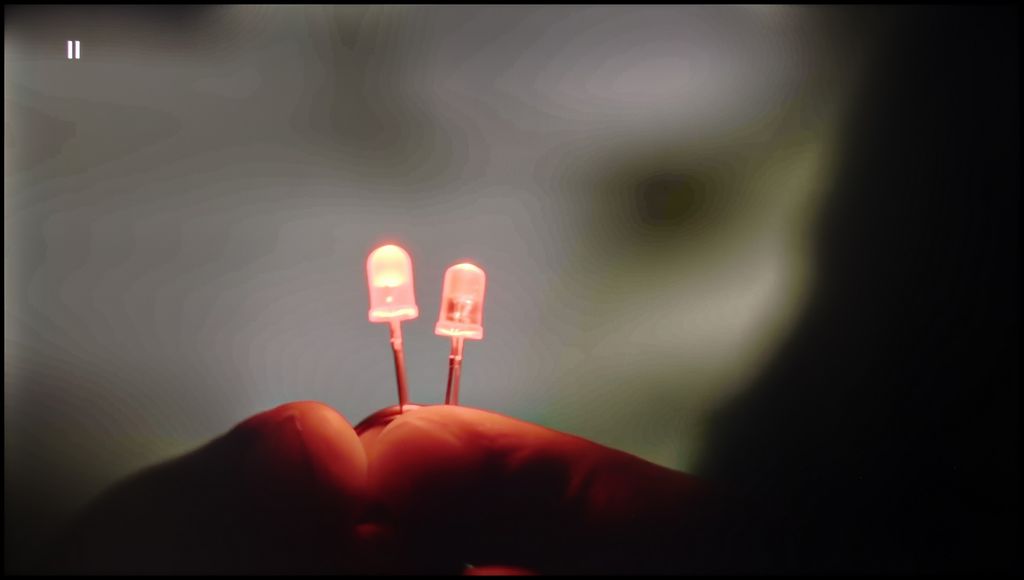
Image without overscan on the SD signal

Unfortunately, the "smooth and gradient image" feature in Hisense E7NQ PRO does not impress when it comes to smoothing tonal transitions in lower-quality materials. At the lowest setting, the change is hard to notice—it's more of a cosmetic improvement. Switching to "Medium" mode already provides a noticeable effect, but it still isn't anything special. In addition, the television starts to excessively interfere with other image elements, which can look unnatural.
Image scaling is also rather average. On the test screen, where a portrait of a model and text are displayed, slightly jagged edges can be seen, which makes the overall presentation less smooth and aesthetically pleasing than we would expect in this class of device. It's simply hard to speak of truly effective enhancement of lower resolution quality here.
HISENSE E7NQ PRO - Blur and motion smoothness
7/10
Maximum refresh rate of the panel: 144Hz
Film motion smoothing option: Yes
Blur reduction option: Yes
BFI function 60Hz: No
BFI function 120Hz: No

Thanks to its 144 Hz panel, the E7NQ PRO performs excellently with almost every type of content. Whether we are watching fast-paced matches, dynamic games, or action movies, the fluidity of motion leaves a good impression. For movies, the manufacturer has equipped the TV with two key tools: "motion blur reduction" and "judder reduction." Each of these functions can be adjusted on a scale from 1 to 10.
At lower values, the processing is subtle, barely noticeable, and gently smooths motion without ruining the cinematic character of the image. The higher we move up the scale, the more clearly the TV intervenes in the presented material, smoothing motion more forcefully, thus minimizing any stutter or micro-cuts. On the other hand, the highest settings may resemble the so-called "soap opera effect," which makes the image look overly smooth, losing some of its cinematic atmosphere. However, with such a scale, we can find the golden mean, adjusting the fluidity of motion to our own preferences.
Blur (native resolution, maximum refresh rate):



As for smudging, while IPS generally performs reasonably well, here we can notice some minor shortcomings. On darker backgrounds, we can occasionally see a light "glow" trailing behind moving objects. It's nothing drastic, but upon close observation, it draws attention to itself.
HISENSE E7NQ PRO - Console compatibility and gaming features
8.5/10
ALLM: Yes
VRR: Yes
VRR range: 48 - 144Hz
Dolby Vision Game Mode: Yes
Correct implementation of HGIG: No
1080p@120Hz: Yes
1440p@120Hz: Yes
4K@120Hz: Yes
Game bar: Yes


If you enjoy switching on your console and immersing yourself in games for hours, the E7NQ PRO is sure to make a strong impression. With its 144Hz refresh rate, gameplay feels impressively smooth, while support for HDMI 2.1 and VRR prevents screen tearing, even during the most action-packed moments. Additionally, ALLM automatically applies the lowest latency as soon as you switch to your console, so there’s no need to tweak the settings manually.
A major plus is the ability to play games in Dolby Vision, enhancing colours and contrast for a more vibrant experience. Hisense has also included a user-friendly game bar, allowing you to monitor key performance stats and adjust settings without leaving the game. The only real drawback is the absence of HGIG support. While not essential, some gamers may miss it if they’re looking for the most accurate representation of a game’s intended visuals. That said, in practice, the E7NQ PRO delivers an excellent gaming experience that’s smooth, responsive, and enjoyable.



HISENSE E7NQ PRO - Input lag
9.9/10
In this regard, Hisense E7NQ PRO really delivers. At a frequency of 60 Hz, we measured about 15 ms, and at 120 Hz the lag drops even to 6 ms, allowing for very quick response and smooth control in games. It is also worth mentioning that even in Dolby Vision mode, input lag doesn't increase dramatically. This allows us to enjoy better image quality without having to sacrifice responsiveness, which will certainly please every avid gamer.
| SDR | HDR | Dolby Vision |
|---|---|---|
| 1080p60: 15 ms | 2160p60: 15 ms | 2160p60 DV: 15 ms |
| 1080p120: 6 ms | 2160p120: 6 ms | 2160p120 DV: 6 ms |
| 2160p60: 15 ms | ||
| 2160p120: 6 ms |

HISENSE E7NQ PRO - Compatibility with PC
7.6/10
Chroma 444 (maximum resolution and refresh rate): Yes
Font clarity: Very Good
Readability of dark text and shapes: Good
Input lag in PC mode (4K, maximum refresh rate): 6ms
Matrix subpixel arrangement: RGB
Max refresh rate: 144Hz
G-Sync: Yes
By connecting the E7NQ PRO to a computer, we will have no reason to complain. The overall readability of fonts is quite good, although with very thin, horizontal lines (the so-called "roofs" of letters) we noticed a slight dimming. This is not a big problem, but it's worth mentioning if we plan to spend long hours in text editors or browsers.
On the other hand, when it comes to gaming on PC, the TV shows its true claws. Support for G-Sync, connection with a 144 Hz panel, and low input lag make even the most demanding titles run smoothly and responsively. As a result, the screen works well not only with a console but also as a solid "window" to the world of PC entertainment.
HISENSE E7NQ PRO - Viewing angles
6.5/10
Brightness drop at an angle of 45 degrees: 69%
In the case of Hisense E7NQ PRO, viewing angles are definitely a strong point, thanks to the IPS panel. This means that when we look at the screen even from a significant angle, colours and brightness do not "shift" as much as in TVs with a VA panel. Of course, compared to OLED or QD-OLED screens, where the image remains practically unchanged from any side, IPS still appears modest. Nevertheless, among LCD televisions, it is hard to find a solution that guarantees equally good viewing angles as those offered by IPS. Unfortunately, everything comes at a cost – in this case, one has to live with average black levels and lower contrast.
HISENSE E7NQ PRO - Daytime performance
6.2/10


Panel finish: Satin
Reflection suppression: Good
Black levels during daytime: Very Good
On a bright day, E7NQ PRO performs quite well. The "satin" matrix diffuses light well, which prevents reflections and glare from turning into distracting "spots" on the screen. With an average brightness of around 500 cd/m², it is possible to watch television in a sunlit room without much struggle to see details or clear content. While it may not be at the level of the highest premium models, it still proves to be quite decent in everyday use.
Panel brightness
Average luminance SDR
Hisense E7NQ PRO: 478 cd/m2
HISENSE E7NQ PRO - TV features
8.9/10
System: VIDAA
System performance: Good
- HDMI inputs: 2 x HDMI 2.0, 2 x HDMI 2.1 48Gbps
- Other inputs: RCA (Chinch)
- Outputs: Toslink (Optical audio), eARC (HDMI), ARC (HDMI), Mini-Jack (Headphones)
- Network Interfaces: Wi-Fi 2.4GHz, Wi-Fi 5GHz, Ethernet (LAN) 100Mbps
- TV reception: DVB-T, DVB-T2, DVB-S, DVB-S2, DVB-C
Classic features:
Recording to USB (terrestrial TV): Yes
Recording programming: Yes
Picture in Picture (PiP): No
RF remote control (no need to aim at the screen): RF
Backlit remote control: No
Teletext: Yes
Audio only mode: Yes
Bluetooth headphones support: Yes
Simultaneous Bluetooth headphones & TV audio: Yes
Smart features:
AirPlay: Yes
Screen mirroring (Windows Miracast): Yes
Voice search: Yes
Voice search in native language: Yes
Ability to connect a keyboard and mouse: Yes




Hisense E7NQ PRO operates based on the VIDAA system, which has recently made significant progress. Here we find most popular applications, although, some music platforms, such as Spotify and Tidal, are missing. Nevertheless, navigating the menu is quite pleasant, and responsiveness is satisfactory. Yes, there are occasional minor "stutters," but not something that will overwhelm our daily usage experience.
On the positive side, we can count on the support for voice search, which makes it easier to find your favourite content without the tedious task of typing letter by letter. The TV also offers a lot of additional options: we can record programs, use AirPlay and mirroring, and also enjoy extensive wireless connectivity options (Wi-Fi and Bluetooth). It may lack a backlit remote or Picture-in-Picture (PiP) mode, but these are rather niche functions, so few people will truly feel their absence. In everyday use, we simply have a solid base of useful tools and convenient solutions.
Sound connection options
HDMI audio:
Other audio outputs:
Toslink: Yes
Stereo (Mini-Jack): Yes
Wireless audio:
Bluetooth: Yes
Supported audio formats (external HDMI eARC audio):
Dolby Digital Plus 7.1: Yes
Dolby True HD 7.1: Yes
Dolby Atmos in Dolby Digital Plus (JOC): Yes
Dolby Atmos in Dolby True HD: Yes
DTS:X in DTS-HD MA: Yes
DTS-HD Master Audio: Yes
Senior accessibility
Numeric keyboard on TV: No
Font size adjustment: Yes
Audio description: Yes
HISENSE E7NQ PRO - Apps
7.7/10























HISENSE E7NQ PRO - Playing files from USB
5.2/10

| Maximum photo resolution: | Supported photo formats: |
|---|---|
If you are counting on comfortable movie watching with subtitles straight from a pendrive, you may, unfortunately, be disappointed. Just like with the previously tested A7NQ, here we encounter a rather peculiar situation: the television does not display subtitles, even if we correctly load them onto the device and try various formats. Paradoxically, we find options to change the colour and appearance of the font, but as they say – what’s the point if we still can’t see anything?
In the case of other files, such as photos or music, the E7NQ PRO manages just fine, playing the most popular formats without a hitch. Unfortunately, for those who would like to use the television as a multimedia player, the lack of working subtitles is quite a major inconvenience.
HISENSE E7NQ PRO - Sound
7/10
-
Maximum volume
Supported codecs
(TV speakers)
Dolby Digital Plus 7.1
Dolby True HD 7.1
Dolby Atmos in Dolby Digital Plus (JOC)
Dolby Atmos in Dolby True HD
DTS:X in DTS-HD MA
DTS-HD Master Audio
When it comes to the built-in speakers, Hisense E7NQ PRO pleasantly surprised us. Of course, it's not on the level of a decent soundbar or home theatre system, but it performs quite well in everyday conditions. During our tests, dialogues remained clear, and the sound was sufficiently clean and spacious that there was no immediate need to invest in additional speakers.
It's also worth mentioning the support for many audio formats – from Dolby Atmos to the less common DTS:X. This means that if we come across suitable source materials, we can expect a more immersive and spatial experience. Although in terms of sound it still mainly serves as a decent base, Hisense E7NQ PRO should satisfy most users who want to turn on the TV and hear clear, unbothered sound.
Acoustic Measurements
No acoustic data
HISENSE E7NQ PRO - Panel details
Software version during testing: V0000.07.60K.O0411
Subpixel Structure:

Panel uniformity and thermal imaging:
Backlight Type: PFS LED

Founder and originator of the "ChooseTV" portal

Journalist, reviewer, and columnist for the "ChooseTV" portal
See articles related to Hisense E7NQ PRO:
10/31/2025
10/28/2025
10/13/2025
1/16/2025
1/16/2025
10/13/2025





